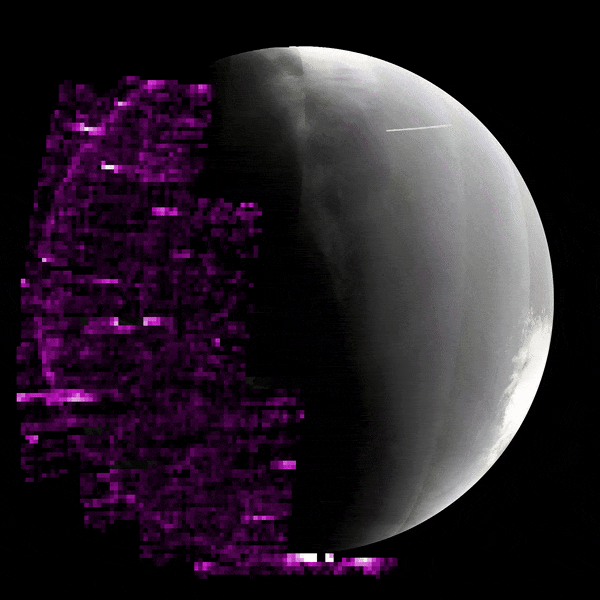Outer Space
Apollo Astronauts Left American Flags, Boots and Even Poop on the Moon. Here's Why These Artifacts Matter
Fifty-five years after the first human lunar landing, scholars and experts are looking to preserve the past as more nations and companies undertake moon missions
Astronomers Propose New Criteria to Classify Planets, but Pluto Still Doesn't Make the Cut
The new definition would define planets based on mass, rather than more ambiguous shape and size characteristics
Scientists Find an Underground Cave on the Moon That Could Shelter Future Explorers
Such caves could serve as lunar bases during upcoming missions, protecting astronauts against cosmic radiation and extreme temperatures
Spacesuit Prototype Turns Pee Into Drinking Water
The system is inspired by the stillsuits for collecting moisture in the science fiction epic <em>Dune</em>
James Webb's Newest Image Shows a Giant Penguin and an Egg
NASA released the dazzling portrait to help celebrate the two-year anniversary of the release of Webb's first images
How 'Fly Me to the Moon' Pokes Fun at Moon Landing Conspiracy Theories
The new Scarlett Johansson and Channing Tatum film presents an alternative history in which government officials prepared to fake the moon landing before NASA pulled off the feat for real
Astronomers Spot Rare, Mid-Sized Black Hole in Our Galaxy
The black hole, if confirmed, is in the star cluster Omega Centauri, about 17,700 light-years away, and it could hold lessons about how such structures are formed
This Nearby Exoplanet Is Hot, Dangerous—and Smells Like Rotten Eggs
Located about 64 light-years away from Earth, the world is the first place astronomers have detected hydrogen sulfide outside our solar system
Here’s What We’ve Learned About Saturn Since Cassini Entered Its Orbit 20 Years Ago
The Cassini-Huygens mission increased our understanding of the planet’s rings and moons
See Ten Awe-Inspiring Images From the Astronomy Photographer of the Year Contest
Auroras, nebulas and stars take the spotlight in this space-themed competition, alongside shots of our own sun and moon
NASA Will Pay SpaceX Up to $843 Million to Destroy the International Space Station
After the end of this decade, the company will guide the aging laboratory into the Pacific Ocean, where many retired spacecrafts have been deposited
Could a Robin and a Bluebird Have Babies? And More Questions From Our Readers
You’ve got questions. We’ve got experts
ISS Astronauts Forced to Briefly Take Shelter as Russian Satellite Suddenly Breaks Up in Orbit
Officials are unsure why the satellite fractured unexpectedly, splintering into nearly 200 pieces
Two Massive Asteroids Will Fly Past Earth This Week. Here's What to Know
Within 42 hours of each other, the pair of large asteroids, which both have no chance of impacting our planet, will approach Earth as they orbit the sun
China Brings Samples From the Moon's Far Side to Earth in First-Ever Feat
The China National Space Administration retrieved more than four pounds of lunar soil samples, which scientists hope will shed light on the early history of Earth and the moon
Starliner Astronauts Will Remain on Space Station Until July Amid Technical Issues
NASA and Boeing have delayed the crewed mission's return to Earth again, as engineers assess helium leaks and a thruster issue on the spacecraft's service module
This Revolutionary New Observatory Will Locate Threatening Asteroids and Millions of Galaxies
Beginning next year, the Vera C. Rubin Observatory will use the world’s largest digital camera to give us a whole new view of the universe
After Months of Glitches and Gradual Fixes, Voyager 1 Is Fully Operational Once Again
Currently 15 billion miles away from Earth, one of NASA’s longest-tenured spacecraft is back from the brink after a technical failure last year put its future in question
Mars Was Hit With a Solar Storm Days After Earth's Aurora Light Show, NASA Says
Studying this event could hold lessons for scientists about how to protect astronauts from radiation on future trips to the Red Planet
A Giant Interstellar Cloud May Have Once Enveloped Earth, Potentially Causing Ice Ages
Astronomers suggest this cold, dense cloud compressed our sun's protective field between two and three million years ago, leaving the Earth exposed to cosmic material
Page 4 of 74
:focal(2076x2076:2077x2077)/https://tf-cmsv2-smithsonianmag-media.s3.amazonaws.com/filer_public/d4/1a/d41ad02d-a810-4130-8b34-495c3d291ffb/as11-44-6551_orig.jpg)
:focal(1051x567:1052x568)/https://tf-cmsv2-smithsonianmag-media.s3.amazonaws.com/filer_public/00/e2/00e2a283-4c55-4442-8304-5382614f5ef3/pia11800large.jpg)
:focal(400x400:401x401)/https://tf-cmsv2-smithsonianmag-media.s3.amazonaws.com/filer_public/82/2f/822fb0dd-f152-4dc2-a855-ce6b8b5f5224/pia13518orig.jpg)
:focal(350x343:351x344)/https://tf-cmsv2-smithsonianmag-media.s3.amazonaws.com/filer_public/72/d6/72d6d2f3-0eaf-43ac-8b23-d5d9f4119c5f/low-res_frontiers-space-technology-maximum-absorbency-garment-hold-credit-claire_walter.jpg)
:focal(2139x1354:2140x1355)/https://tf-cmsv2-smithsonianmag-media.s3.amazonaws.com/filer_public/94/63/9463bb82-fefa-4419-ab97-22b5c6033587/interacting_galaxies_arp_142_nircam_and_miri_image.jpg)
:focal(700x527:701x528)/https://tf-cmsv2-smithsonianmag-media.s3.amazonaws.com/filer_public/7c/56/7c561546-e709-4b0a-aeee-3e77c9943e27/scarjo.jpg)
:focal(560x560:561x561)/https://tf-cmsv2-smithsonianmag-media.s3.amazonaws.com/filer_public/4d/05/4d051c14-9155-4062-8244-aa19edabf81b/hubble-omegacent-crop-stsci-01j1x1rzvdzs3hv0s5vbhc7x0r.webp)
:focal(3500x1983:3501x1984)/https://tf-cmsv2-smithsonianmag-media.s3.amazonaws.com/filer_public/1e/06/1e06b8cf-be0d-4df1-b7ab-53283700323d/hd_189733bs_atmosphere.jpg)
:focal(401x206:402x207)/https://tf-cmsv2-smithsonianmag-media.s3.amazonaws.com/filer_public/5f/4a/5f4a37a1-a7f2-4c3d-a1bb-54ac0c6d5f06/pia21345_modest.jpg)
:focal(1005x1082:1006x1083)/https://tf-cmsv2-smithsonianmag-media.s3.amazonaws.com/filer_public/14/0d/140d68d7-f50b-47b1-b957-c3482b9d2915/abandoned_house.jpg)
:focal(1516x996:1517x997)/https://tf-cmsv2-smithsonianmag-media.s3.amazonaws.com/filer_public/d0/f1/d0f11470-d900-4ca5-9159-6d60c710a179/iss2.jpg)
:focal(993x1125:994x1126)/https://tf-cmsv2-smithsonianmag-media.s3.amazonaws.com/filer_public/b5/15/b515811b-2f38-42d8-a05d-6eb32ab784bf/bird.jpg)
:focal(960x549:961x550)/https://tf-cmsv2-smithsonianmag-media.s3.amazonaws.com/filer_public/e1/13/e11310c8-6874-4f1f-8a89-a06cc84c9338/geostationary_orbit.jpg)
:focal(1750x1083:1751x1084)/https://tf-cmsv2-smithsonianmag-media.s3.amazonaws.com/filer_public/90/df/90dfeb2c-1659-4b56-969c-9c4255f9c2f7/space_safety_programme_-_near_earth_objects.jpg)
:focal(2418x1543:2419x1544)/https://tf-cmsv2-smithsonianmag-media.s3.amazonaws.com/filer_public/45/19/45197949-7a36-4024-be92-d772ab33919c/gettyimages-2159261406.jpg)
:focal(972x2592:973x2593)/https://tf-cmsv2-smithsonianmag-media.s3.amazonaws.com/filer_public/89/73/8973fbaf-9373-4bff-bfe4-a55de5b94b9b/starliner3.jpg)
:focal(800x602:801x603)/https://tf-cmsv2-smithsonianmag-media.s3.amazonaws.com/filer_public/7f/3b/7f3baf46-149b-42af-83d7-fb8bc18ca3b3/main_noirlab2409b_web.jpg)
:focal(4096x2321:4097x2322)/https://tf-cmsv2-smithsonianmag-media.s3.amazonaws.com/filer_public/c1/85/c185108a-791f-4610-9084-98dcb2c0a49a/voyager2.jpg)

:focal(537x445:538x446)/https://tf-cmsv2-smithsonianmag-media.s3.amazonaws.com/filer_public/e8/b6/e8b68174-1c9b-465e-8469-b66151dd09fa/heliosphere.jpg)